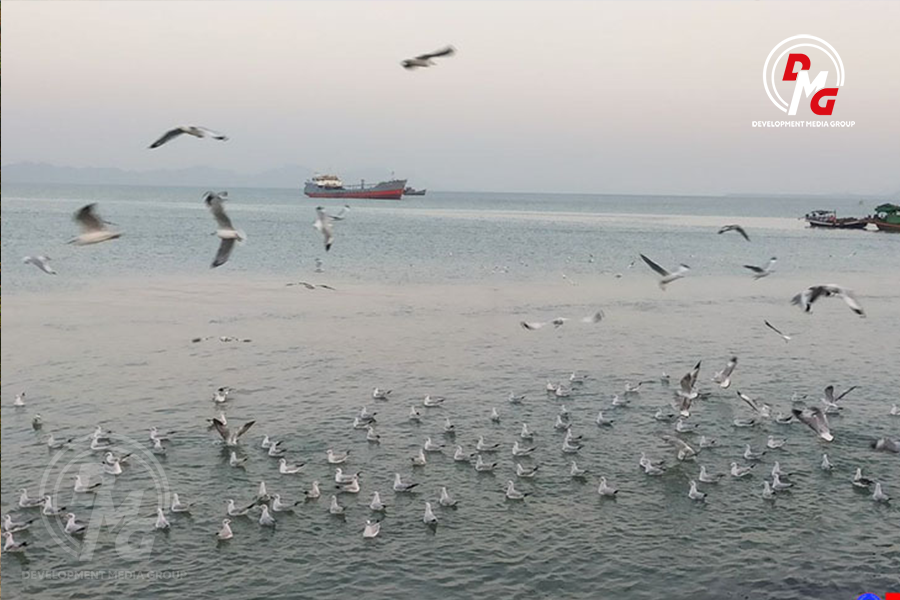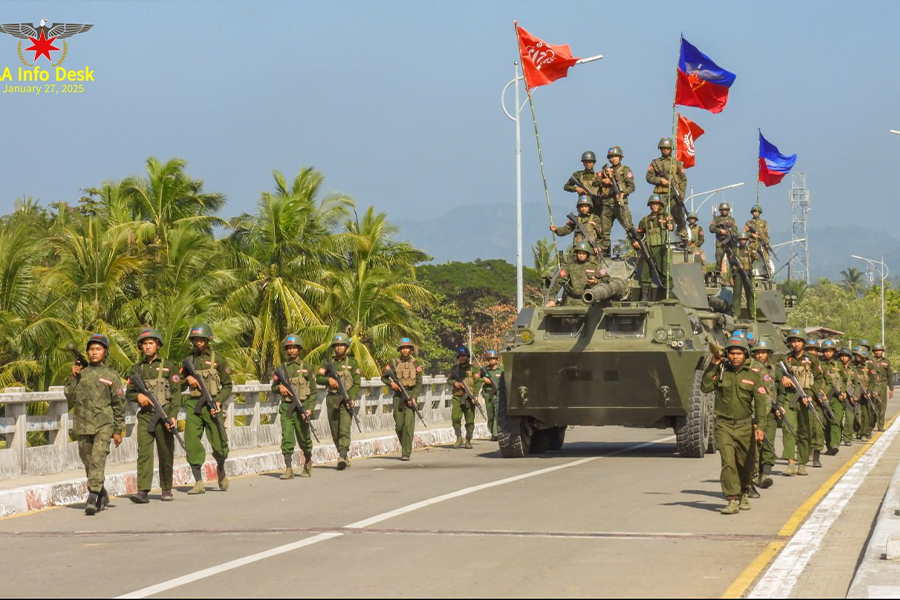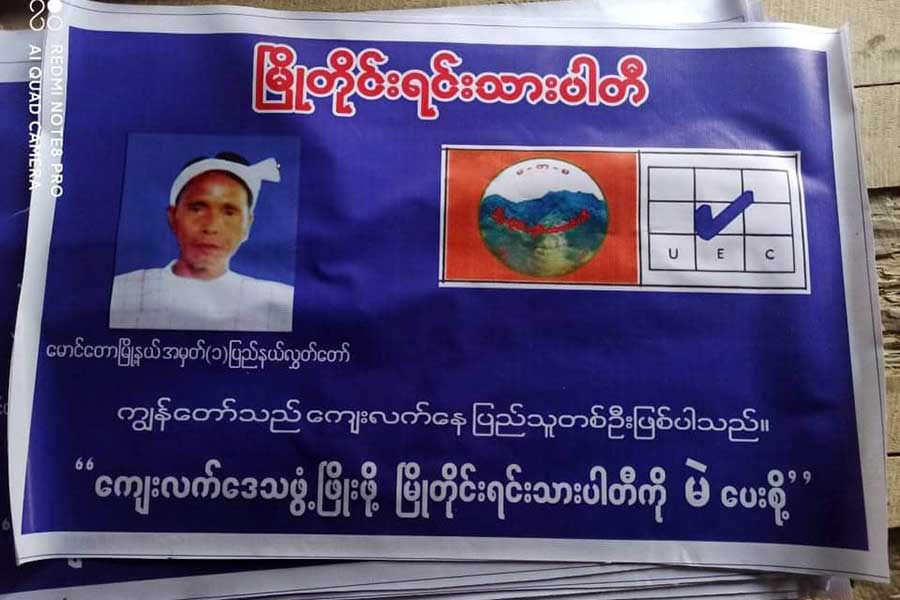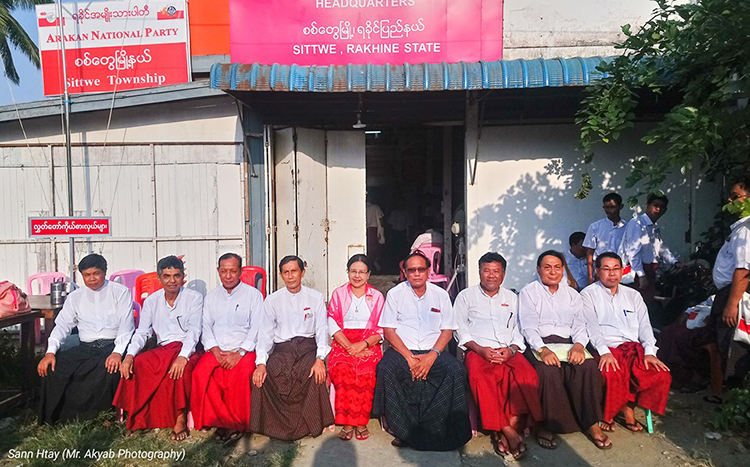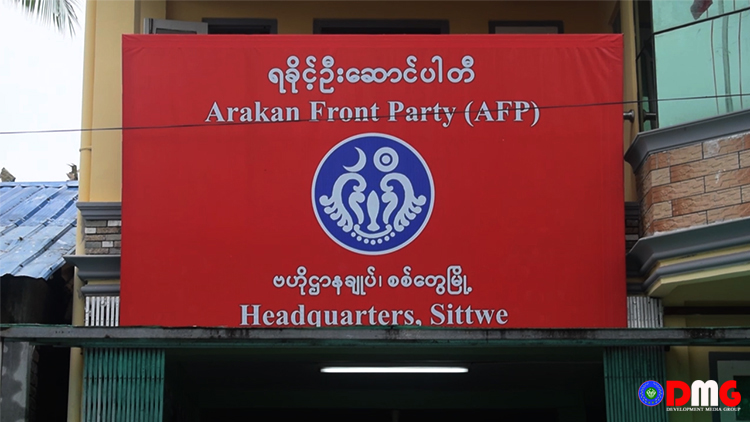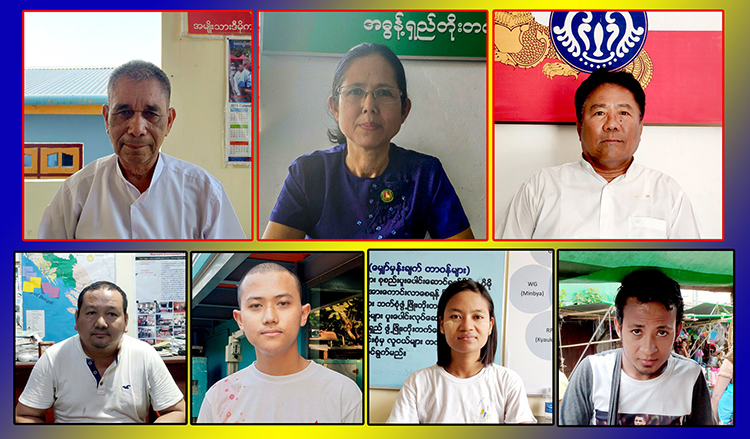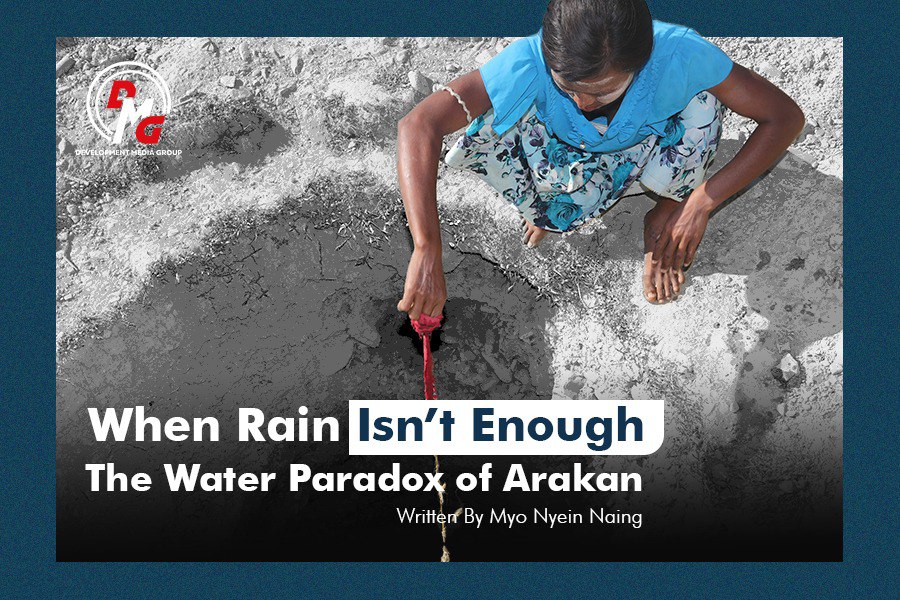- Junta unable to hold elections in dozens of wards and village-tracts in Sittwe, Kyaukphyu
- Fighting escalates between Myanmar military, Arakan Army in Ayeyarwady Region
- Regime steps up civilian arrests in Sittwe
- ULA safeguards Mrauk-U's ancient heritage
- Arakan on the Edge: What the DMG Landmine Impact Report Reveals About Myanmar's Deepening Humanitarian Crisis
Are regime forces gaining counterattack momentum?
Myanmar's military regime, which has lost large areas of territory across the country, has been launching counter-offensives against the revolutionary forces since late May, and has been increasing its offensive pace as the rainy season sets in.
14 Jul 2025
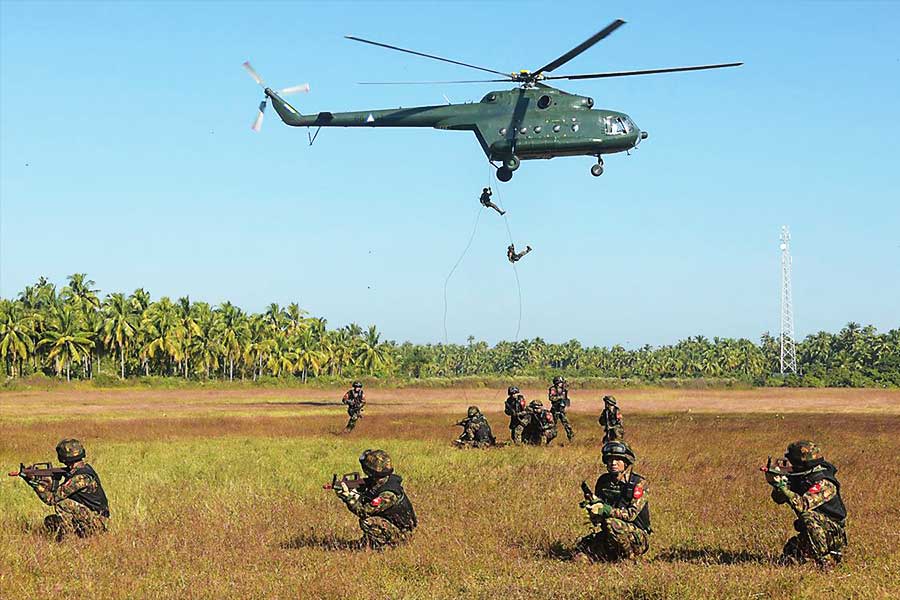
DMG Newsroom
14 July 2025, Sittwe
Myanmar's military regime, which has lost large areas of territory across the country, has been launching counter-offensives against the revolutionary forces since late May, and has been increasing its offensive pace as the rainy season sets in.
The military regime has been using airstrikes, along with massive ground forces and large amounts of ammunition, to launch offensives and retake some territory.
The military regime has now retaken Mobye in southern Shan State and is conducting major ground, artillery, and air offensives in Nawnghkio in northern Shan State and Hpakant in Kachin State.
Military analysts believe that the military regime's ability to launch counteroffensives is due to its access to weapons, drones, and human resources.
"There is a gap between the Myanmar military and the anti-regime forces in terms of ammunition. The military regime has increased its use of drone technology and jammers. Drones were initially used by the revolutionary forces, but the military regime has since caught up. The Myanmar military was weakened in 'Operation 1027,' but now it seems that its manpower is regaining," said Zin Yaw, a captain of the Civil Disobedience Movement (CDM).
The military regime will launch major offensives to quickly recapture lost territory, and airstrikes will continue during the rainy season, junta chief Min Aung Hlaing said at a military meeting in Naypyidaw in May.
Military observers believe that the military regime is trying to hold elections in December and is aiming to recapture lost territory ahead of the elections.
Offensives by the revolutionary forces continued at a good pace in early 2025, but have since slowed down.
With Operation 1027, the revolutionary forces captured nearly 100 battalion headquarters and towns in just over a year, but in 2025, have only notched a handful of similar victories including in Falam in Chin State, Indaw in Sagaing Region and Mansi in Kachin State, in six months.
Military and political analysts believe that the reason why the revolutionary forces are fighting fewer battles for control of towns and military camps is that the cities they are currently attacking are cities that can determine the entire region and have taken a long time to capture.
"If the Kachin Independence Army (KIA) can capture Bhamo, it could take control of the entire Kachin State and even into Sagaing Region," said U Than Soe Naing, a political analyst.
"In Arakan State, if Kyaukphyu falls to the Arakan Army, China is fiercely defending the military regime because it could become resentful and change its stance. Now, when battles for control of towns reach a point where the entire country is determined, the military situation appears to be calm," he said.
On the Arakan front, the AA is attacking Kyaukphyu but has not yet been able to capture military bases. In the Ta'ang region, the TNLA is only fighting in self-defence due to Chinese pressure, and the military regime is taking advantage of the situation and attacking back with full force.
In Kachin State, the KIA has been attacking Bhamo, where the Military Operations Command (MOC)-21 is located, since late 2024, and the fighting has been ongoing ever since.
Although there are still clashes in Kayah and Karen states, battles for control of towns and military camps have weakened, and the offensive of the revolutionary forces in Chin State has also slowed down.
In Chin State, the Chin Brotherhood has said it will capture Tidim town, another target, and preparations are underway for that, but the offensive has not yet begun.
"Just as we are preparing, the military regime is also preparing. It is a matter of taking the initiative. We see the military regime preparing to prevent the battle for control of Tidim. When and how this will happen, the people will know as the revolution progresses. For now, I would like to say that we are preparing," Salai Yaw Mang, spokesperson of the Chin Brotherhood, told DMG in an exclusive interview.
Operation 1027, led by the Three Brotherhood Alliance, had a major impact on the revolutionary forces to overthrow the dictatorship across the country and increased the military momentum.
Chinese intervention halted the offensive in northern Shan State, forced the Myanmar National Democratic Alliance Army (MNDAA) to surrender some towns to the military regime, and forced the Ta'ang National Liberation Army (TNLA) to continue its military campaign. These events slowed the momentum of the Spring Revolution and provided an opportunity for the military regime.
Chinese intervention and Russian arms supplies have delayed the fighting for the revolutionary forces and provided support for the military regime to continue its counteroffensive.
"China's aggression is at a very deep level. Russia is also providing the military regime with large amounts of weapons and ammunition for its airstrikes. China and Russia are making all-out efforts to keep junta boss Min Aung Hlaing in power. China and Russia are also equipping the military regime with new drone technology and new drone weapons," U Than Soe Naing said.
Recently, the military regime has been using drones as a mainstay in counter-offensive operations, and around 200 instructors and trainees are training on various types of drones daily at the No. 3 Basic Military Training School in Yamethin Township, Mandalay Region, according to research by the Myanmar Defense & Security Institute (MDSI).
The military regime has purchased a large number of Chinese and Russian-made drones and is training them at the No. 3 Basic Military Training School, which includes reconnaissance drones, various attack drones, and micro-drones, according to MDSI.
The military regime, with support from China and Russia, is strategically recruiting new recruits through forced conscription and regaining lost territory.
"The military regime is planning to regain lost territory before the election and show that the country is stable in order to hold the election. For this, it seems likely that the military regime will resort to violence," a political analyst observed.




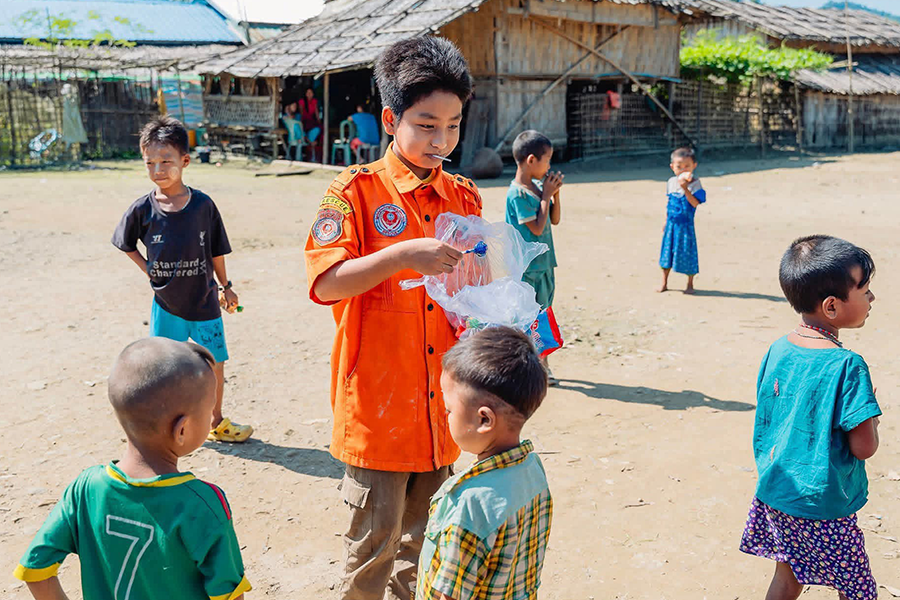
.png)

